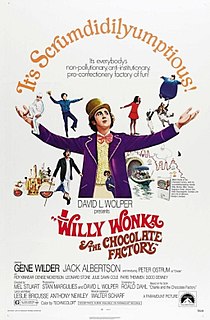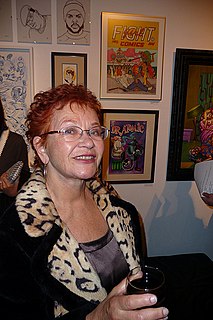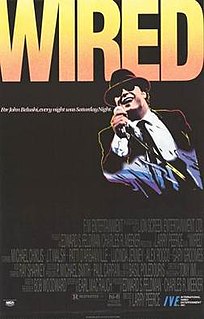Related Research Articles

Newcastle upon Tyne, often simply Newcastle, is the largest city and metropolitan borough in North East England. It forms the core of the Tyneside conurbation, the eighth most populous urban area in the United Kingdom. The city is situated on the River Tyne's northern bank, approximately 8.5 mi (13.7 km) from the North Sea.

Wallace Fitzgerald Beery was an American film and stage actor. He is best known for his portrayal of Bill in Min and Bill (1930) opposite Marie Dressler, as General Director Preysing in Grand Hotel (1932), as Long John Silver in Treasure Island (1934), as Pancho Villa in Viva Villa! (1934), and his titular role in The Champ (1931), for which he won the Academy Award for Best Actor. Beery appeared in some 250 films during a 36-year career. His contract with Metro-Goldwyn-Mayer stipulated in 1932 that he would be paid $1 more than any other contract player at the studio. This made Beery the highest-paid film actor in the world during the early 1930s. He was the brother of actor Noah Beery and uncle of actor Noah Beery Jr.

Willy Wonka & the Chocolate Factory is a 1971 American musical fantasy film directed by Mel Stuart and starring Gene Wilder as Willy Wonka. It is an adaptation of the 1964 novel Charlie and the Chocolate Factory by Roald Dahl. The film tells the story of a poor child named Charlie Bucket who, after finding a Golden Ticket in a chocolate bar, visits Willy Wonka's chocolate factory along with four other children from around the world.

The Northumbrian smallpipes are bellows-blown bagpipes from North East England, where they have been an important factor in the local musical culture for more than 250 years. The family of the Duke of Northumberland have had an official piper for over 250 years. The Northumbrian Pipers' Society was founded in 1928, to encourage the playing of the instrument and its music; Although there were so few players at times during the last century that some feared the tradition would die out, there are many players and makers of the instrument nowadays, and the Society has played a large role in this revival. In more recent times the Mayor of Gateshead and the Lord Mayor of Newcastle have both established a tradition of appointing official Northumbrian pipers.

A Series of Unfortunate Events is a series of thirteen children's novels written by American author Daniel Handler under the pen name Lemony Snicket. The books follow the turbulent lives of Violet, Klaus, and Sunny Baudelaire. After their parents' death in a fire, the children are placed in the custody of a murderous relative, Count Olaf, who attempts to steal their inheritance and, later, orchestrates numerous disasters with the help of his accomplices as the children attempt to flee. As the plot progresses, the Baudelaires gradually confront further mysteries surrounding their family and deep conspiracies involving a secret society known as V.F.D., with connections to Olaf, their parents, and many other relatives. The series is narrated by Lemony Snicket, who dedicates each of his works to his deceased love interest, Beatrice, and often attempts to dissuade the reader from reading the Baudelaires' unfortunate story.

John Martin was an English Romantic painter, engraver and illustrator. He was celebrated for his typically vast and melodramatic paintings of religious subjects and fantastic compositions, populated with minute figures placed in imposing landscapes. Martin's paintings, and the prints made from them, enjoyed great success with the general public—in 1821 Thomas Lawrence referred to him as "the most popular painter of his day"—but were lambasted by John Ruskin and other critics.

Trina Robbins is an American cartoonist. She was an early and influential participant in the underground comix movement, and one of the first few female artists in that movement. Both as a cartoonist and historian, Robbins has long been involved in creating outlets for and promoting female comics artists. In the 1980s, Robbins became the first woman to draw Wonder Woman comics. She is a member of the Will Eisner Hall of Fame.

Wired is a 1989 biographical film of comedian and actor John Belushi, directed by Larry Peerce. It was based on the 1984 book of the same name by Washington Post journalist Bob Woodward, and adapted for the screen by Buckaroo Banzai creator Earl Mac Rauch. It stars Michael Chiklis in his film debut as Belushi. Wired was both a critical and a commercial failure. The film has yet to be released on DVD or Blu-ray, and the videocassette originally released by International Video Entertainment is out of print.

Lois Lenore Lenski Covey was a Newbery Medal-winning author and illustrator of picture books and children's literature. Beginning with the release in 1927 of her first books, Skipping Village and Jack Horner's Pie: A Book of Nursery Rhymes, Lenski published 98 books, including several posthumous works. Her work includes children's picture books and illustrated chapter books, songbooks, poetry, short stories, her 1972 autobiography, Journey into Childhood, and essays about books and children's literature. Her best-known bodies of work include the "Mr. Small" series of picture books (1934–62); her "Historical" series of novels, including the Newbery Honor-winning titles Phebe Fairchild: Her Book (1936) and Indian Captive: The Story of Mary Jemison (1941); and her "Regional" series, including Newbery Medal-winning Strawberry Girl (1945) and Children's Book Award-winning Judy's Journey (1947).
Edward "Ned" Corvan was a Tyneside concert hall songwriter and performer, and a contemporary of George "Geordie" Ridley. His songs were printed in a modified English orthography designed to represent the traditional dialect of Tyneside in the middle of the 19th century, and are examples of Dialect Literature.

Henry Perlee Parker (1785–1873) was an artist who specialised in portrait and genre paintings. He made his mark in Newcastle upon Tyne in the 1820s through patronage by wealthy landowners and through paintings of large-scale events of civic pride. Over a period of forty years his work was exhibited at the Royal Academy and the British Institution in London. Coastal scenes of fisherfolk and smugglers were a popular specialism. Through the distribution and sale of mezzotint prints of subjects such as William and Grace Darling Going to the Rescue of the SS Forfarshire, Parker became one of the north-east's best-known nineteenth-century artists. In Newcastle upon Tyne he was central to the setting-up of a Northern Academy for the Arts. Later, in Sheffield, he taught drawing at the Wesleyan Proprietary Grammar School, and in his later years he lived in Hammersmith, London. He had a large family and was married three times.
William Purvis, probably better known as "Blind Willie", was a Tyneside concert hall song writer and performer in England at the end of the 18th and start of the 19th century. His most famous song is "Broom Buzzems". He became known later as the "ancient laureate of the Tyne" and was remembered in the songs of Robert Gilchrist (1797–1844) and Thomas Thompson (1773–1816).
The Newcassel Worthies is a famous Geordie folk song written in the 19th century by William "Willie" Armstrong, in a style deriving from music hall.
Newcassel Props is a famous Geordie folk song written in the 19th century by William Oliver, in a style deriving from music hall.
William Watson (1796–1840) was a Tyneside concert hall singer and songwriter in the early 19th century. His most famous song is "Dance To Thy Daddy".
The Newcastle Eccentrics were a group of unrelated people who lived in and around the centre of Newcastle and its Quayside between the end of the 18th and early/mid 19th century.
Many Geordie songwriters used aliases, for whatever reason. This article lists many of these aliases, giving in some cases, where known, the real name, and in others, some of the songs or poems attributed to them.
The Newcastle Songster, by John Marshall is a volume of six chapbooks, giving the lyrics of local, now historical songs, but virtually no other information. It was published by John Marshall in stages between 1812 and 1826.
References
- ↑ "Conrad Bladey's Beuk O' Newcassel Sangs". Archived from the original on 6 June 2011. Retrieved 17 June 2012.
- ↑ "New comedy night Silly Billies - The Journal". www.thejournal.co.uk. Archived from the original on 2 April 2014.